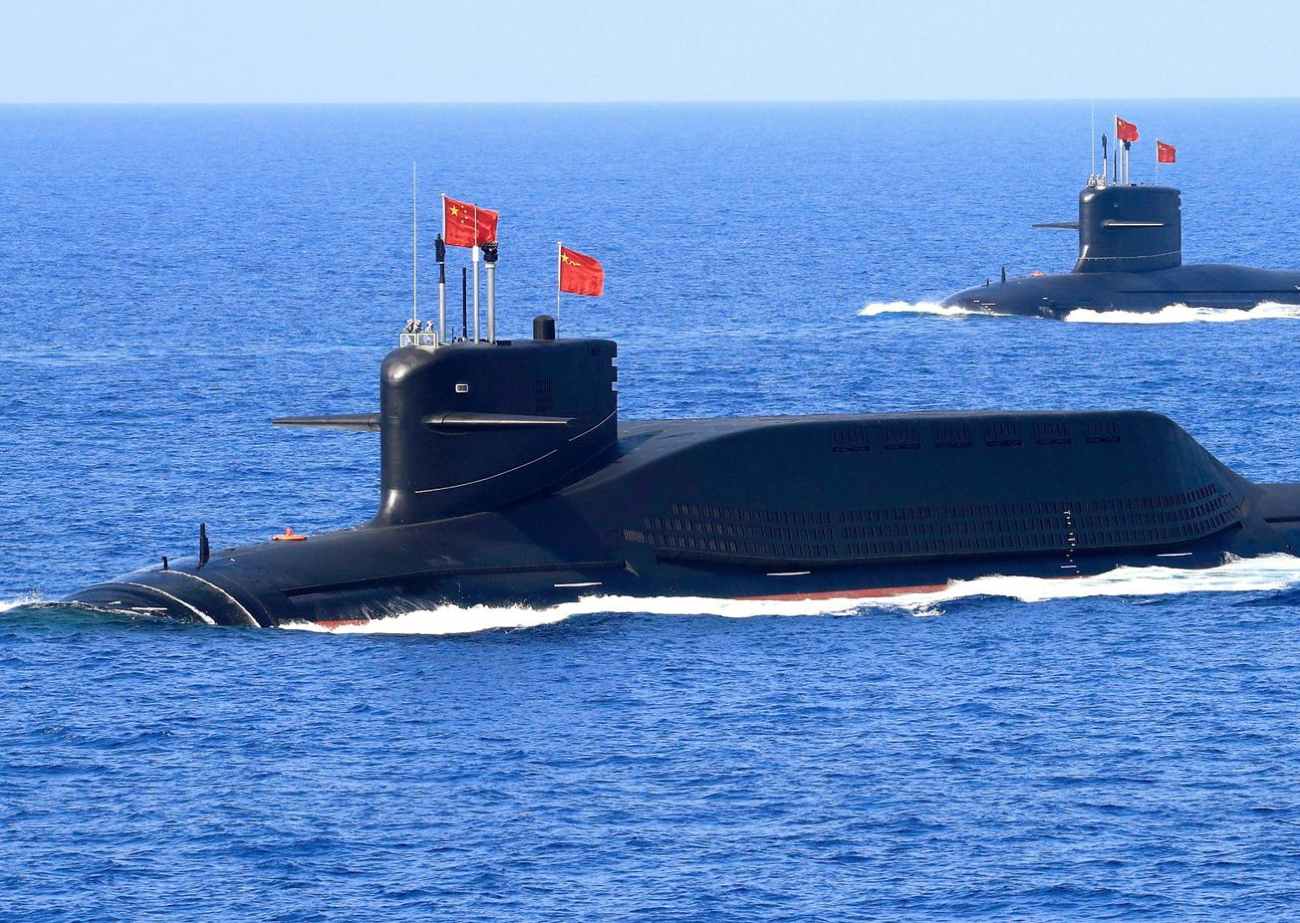Earlier this week, unverified reports started to surface on social media suggesting that a Chinese submarine had crashed on its transit through the Taiwan Strait. As soon as these reports were posted to social media, they went viral, triggering a widespread frenzy about the fate of the PLA Navy submarine.
44 Kills, Zero Losses: How F-16 Fighting Falcons, That Ukraine Is Set To Acquire, Destroyed Russian Jets During Lebanon War
Some of these reports, which started popping up on August 21, suggested that the submarine in question was the nuclear-powered Type-093 Shang Class submarine. Subsequently, another set of reports added to the hysteria by claiming that all the submarine crew members had died.
The Shang class is a family of Chinese second-generation nuclear-powered attack submarines (SSNs). The Chinese People’s Liberation Army Navy (PLA) has six of these submarine types in service that make up the backbone of its submarine fleets. The more advanced Chinese subs like the Type 093A and Type 093B SSNs are upgraded versions of the Type 093.
However, in less than 24 hours, the Taiwan Ministry of National Defense (MND) dismissed the reports as untrue. The Taiwanese MND said on August 22 that there was no proof to support the rumor that a Chinese submarine had crashed in the Taiwan Strait.
The MND spokesperson, Major General Sun Lifang, stated that it had carefully grasped the dynamics of all sea and airspace around the Taiwan Strait through joint intelligence, surveillance, and reconnaissance methods, and there was no relevant information confirming the loss of a Chinese nuclear submarine.
Subsequently, OSINT analysts and weapon tracking accounts started to retract the unconfirmed reports.
After Taiwan’s MND released its statement, popular open-source intelligence and naval analyst H.I. Sutton wrote on platform X, “I deleted the post re-reported missing #Chinese submarine. So far not seen any convincing evidence to support rumors, and too much weight is being placed on my posts (despite my caveats).” Sutton advised netizens to treat the topic with caution owing to the sensitivity.
**UPDATE**
I deleted the post re reported missing #Chinese submarine.
So far not seen any convincing evidence to support rumors, and too much weight is being placed on my posts (despite my caveats)
Treat topic with caution ⚠️
Awaiting credible info #OSINT pic.twitter.com/yo0hBY8rfa
— H I Sutton (@CovertShores) August 22, 2023
The reports of the crash came amid months of increased tension between China, Taiwan, and the US and days after Beijing began extensive military exercises around Taiwan. The People’s Liberation Army’s Eastern Theatre Command said in a brief statement earlier this month that it was conducting joint naval and air combat readiness patrols around the island.
These drills, which reportedly began on August 19, were allegedly aimed at retaliating against the visit of Taiwanese Vice President William Lai to the United States. Lai is the frontrunner in the elections due in January next year. China regularly condemns high-profile meetings between officials of Taipei and Washington.
In recent months, China has conducted several military exercises close to Taiwan, including one in August 2022, when US House speaker Nancy Pelosi paid a high-profile visit to Taipei. Later, in April 2023, the Chinese military conducted another set of drills when Taiwan’s President Tsai Ing-wen met US House Speaker Kevin McCarthy.
The bizarre piece of news not only exposed the extent of false information that could proliferate on social media platforms but also rekindled memories of an actual Chinese sub-accident that rocked the PLAN and the entire country.

China’s 2003 Submarine Tragedy
Unlike the news of the recent crash, the Chinese submarine crash news of 2003 was very much authentic, and unlike the recent spell of rumors that overtook the internet, the submarine accident of 2003 took place in the Yellow Sea of China instead of the Taiwan Strait.
In early May 2003, the PLA Navy suffered its biggest peacetime military tragedy in Communist China’s history as an overloaded submarine operating off the nation’s northeast coast claimed the lives of 70 officers and crew members aboard.
In a brief report, the official New China News Agency at the time stated that the disaster took place “recently” in the Yellow Sea between the Shandong and Korean peninsulas. The vessel involved in the accident, the Navy Submarine No. 361, was a diesel-powered vessel engaged in a drill when the tragedy occurred.
The report noted that due to a mechanical malfunction, the 70 crew members on board died in the submarine accident. At the time, preliminary reports suggested that the vessel likely belonged to the East China Fleet.
Former Chinese president and chairman of the Central Military Commission of the time, Jiang Zemin, said, “The officers and sailors of 361 remembered their sacred duty entrusted by the Party and the People. They died on duty, sacrificed themselves for the country, and are great losses to the People’s Navy.”
After the disaster, the crippled submarine drifted for ten days because it was on a silent, no-contact exercise. The vessel was discovered by Chinese fishermen who noticed its periscope protruding above the surface on April 25, 2003. The crew were slumped over at their stations, seemingly dying before becoming aware of any issue. The incident occurred sometime in April, and was officially notified by Chinese officials on May 3.
Soon after, the PLA itself informed the media about the tragic accident, in a stark departure from its regular practice. Military experts closely following the developments identified the vessel as a Ming-class submarine. When the accident took place some 20 years ago, the submarine was already 20 years old.
In the aftermath of the accident, military experts noted the Ming-class submarine could hold 57 men at a time, including ten officers, and that it would have been “packed” if it had 70 men on board at the time of the accident.
The incident eventually led to the dismissal from the service of the PLA Navy’s Commander Shi Yunsheng and Political Commissar Yang Huaiqing.
Although the accident came at a time of peace and tranquility in the region, it somewhat shook the annals of the PLA Navy and the Central Military Commission. Twenty years later, it is still distastefully remembered as the worst tragedy to have struck the PLA Navy, which has grown by leaps and bounds since.
- Contact the author at sakshi.tiwari9555(at)gmail.com
- Follow EurAsian Times on Google News




